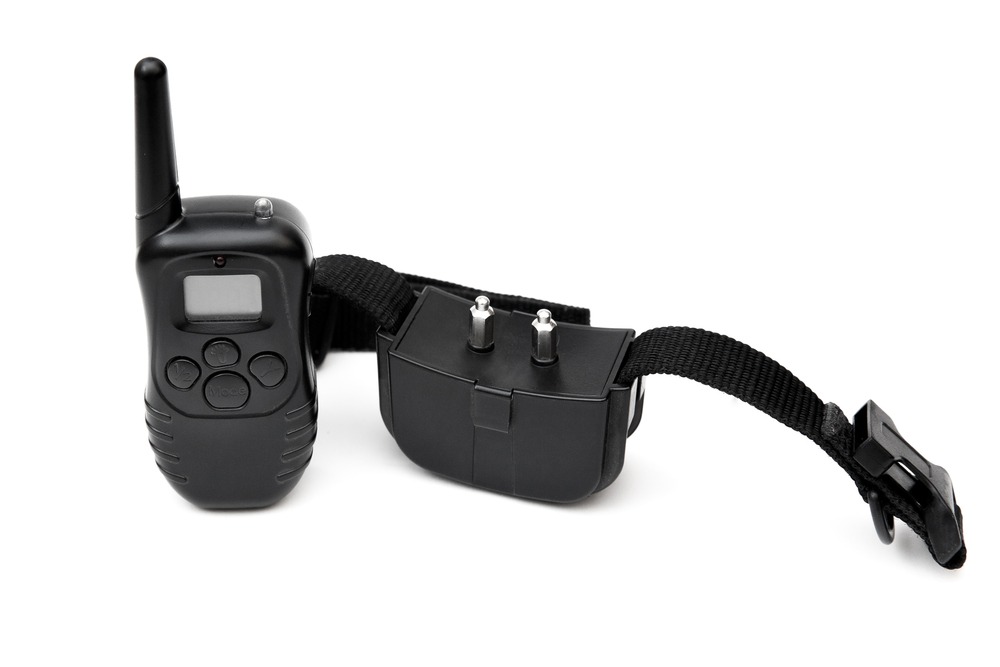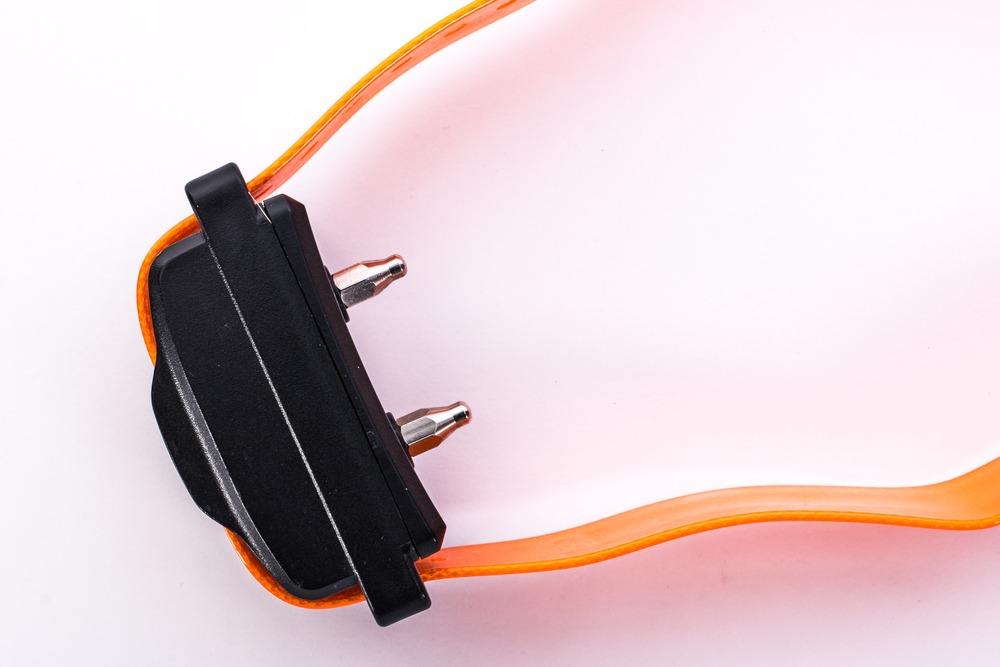Having a dog that barks incessantly can be a serious pain, but there are different ways in which you can reduce barking in such a dog. One of the most popular, but least humane ways is with the use of shock collars for dogs, also known as e-collars. Other more humane methods are with the use of vibration, ultrasonic, and spray collars.
What are shock collars for dogs? These devices are like regular dog collars, except that they use electrostatic shock to stop a dog from barking. They are a sort of negative reinforcement tool that many people think does not serve any real training purposes, but inflict pain to stop unwanted behavior.
Table of Contents
Are bark collars cruel to dogs, or do shock collars hurt dogs?
Yes, they are. This is because these devices cause or inflict pain on a dog. They work by sending static pulses to a dog’s body when their sensors detect the bark of the dog, causing the animal to pause. A major problem with these devices is that they do not teach the animal what you want it to do. Instead, they only suppress the unwanted behavior of barking.
Since humane training such as the use of vibration and spray collars might be also very effective at getting your pet to stop unwanted barking, it is better for you to use them instead.
Dog shock collars have the following disadvantages:
1. They inflict pain on the dog. These devices have varying intensity levels with which they shock the dogs. Some people use the lowest settings for pooches that are not too stubborn. While they use the strongest settings for pets that are so stubborn that lower settings do not deter them from barking.
However, even if you set the collar to the lowest, the fact is still that you are inflicting pain on your dog. And using negative reinforcement to train your pet. Besides, every pet has a different pain threshold level, and you may not be able to gauge that of your pet and may use the device incorrectly.
2. The device may inflict the shock unnecessarily or wrongly. It is not unlikely that you own more than one pet, or that your neighbors also have dogs. That may be in close vicinity with your own pet. If this is the case, then they will all bark, whether at the same time, or some will bark while others are quiet. Some automatic shock collars may pick up on the barks of other dogs. And punish the one wearing it wrongly for the bark.
This negates the purpose of teaching the dog not to bark because, before, the animal was used to being shocked for barking, but now, even when it doesn’t bark, the shock is still delivered. This sort of thing may confuse the dog.
3. It does not involve positive rewards. Positive reinforcement works so well because it involves giving a reward that your pet associates with the behavior you want it to perform. Using shock collars, especially automatic ones, does not come with rewards.
4. It may cause stress and other psychological distresses to the animal. Some studies show that using static shock on dogs may cause stress and anxiety to the animal and increase its heart rate. Together with other not-so-desirable consequences.
5. Professionals such as advocates for human and animal rights do not encourage the use of these devices. Many organizations are against the practice of using e-collars on dogs in the name of training the animals. As they say it is not humane, and we totally agree.

Do vets use shock collars?
Veterinarians do not recommend the use of dog bark shock collars. Even different organizations that advocate for animal/ human rights are against it as a sort of negative reinforcement or punishment-based training. The Humane Society of the United States of America has this to say about shock collars:
“They are also used with pet containment (electronic fencing) systems. Shock collars are often misused and can create fear, anxiety, and aggression in your dog toward you or other animals. While they may suppress unwanted behavior, they do not teach a dog what you would like them to do instead and therefore should not be used.”
Also, the Royal Society for the Prevention of Cruelty to Animals, (RSPCA Australia) is opposed to the use of shock collars and even any other device that delivers electric shocks to dogs, as it feels that such devices are inhumane.

Another organization against the use of these devices is the Australian Veterinary Organization. The veterinary organization clearly states:
“Behaviour-modifying collars that use electric shock should not be used on animals and should be banned.”
Instead, it endorses the use of positive reinforcements.
E-collar training versus positive reinforcement
Most official bodies advocate the use of positive reinforcement over e-collar training as it is more effective, plus it does not carry as many risks. E-collar training may have negative effects such as stress, fear, and other issues on a dog.
Positive reinforcement, however, uses rewards and things that dogs love to train the dog. All dogs love treats, and rewarding the dog for good behavior with the use of treats is bound to make the dog associate the treats with obedience. Positive reinforcement has been shown to increase the bond between pets and their owners. While the use of e-collars has not been shown to do that.
Rather, most dogs stop the negative behavior that they were exhibiting due to fear and pain and to avoid being shocked. In fact, there have been reports of the lack of effectiveness of e-collars. This was the case with some dogs whose owners used electric fences for dogs to stop their pets from going beyond a certain perimeter or something like that. Some of these dogs became so afraid of going out that they started having accidents and peeing inside the house. It is also thought that the use of these devices is more likely to cause a dog to run away from home.
Shock collar alternatives
There are different other humane ways in which you can teach your dog not to bark in such annoying ways. They include training, dog bark collars that are no shock, and the use of anti-barking devices.
Why do dogs bark?
Before we talk about how to train your dog to stop barking, we’ll talk about what could be causing this behavior.
Some common causes of excessive barking in dogs include separation anxiety, boredom, attention-seeking, pain and health issues, territorial behavior, etc.
• Separation anxiety: Many pooches will become anxious whenever they are left alone at home for a long period of time. Dogs are social animals that require companionship. It is best to train the dog to learn how to stay alone for some time while the animal is still very young.
• Boredom: All dogs, regardless of their energy levels, require some form of exercise every day. Failure to exercise your pooch as required can cause the animal to become restless and bored, and it may start to bark unnecessarily. Aside from that, ensure you get toys that your pet loves for the animal to play with, especially when you are not home, to help get rid of the boredom. When you get home, also spend some time playing with your pet.
• Attention seeking: Some pets will bark unnecessarily because they want attention from their owners.
• Illness and injury: Dogs cannot communicate with words with their owners, and so if the animal is injured or ill, it may express this discomfort by barking. If you have checked your pet for everything that you think might be causing it to bark, but cannot figure out the reason for the excessive barking, do well to check your pet for signs of injury or illness.
• Territorial behavior: Some dogs bark as a means of establishing dominance or marking their territories.
One thing you should try as much as possible not to do if you are tired of your pet’s barking is never to shout at the animal to stop. This may have an adverse result, as it may only make it think that you are ‘barking’ alongside.
Training your pooch not to bark
You can train your pet not to bark using the following methods:
- Order the animal to stop. If you have a well-trained dog that understands commands, tell the dog in a firm voice to stop barking. You can use the word ‘quiet’ and if the pooch stops, even if it is only for a little while, in that little while, give it a treat. Never give it a treat when it is barking.
- Ignore the animal if applicable (and if possible). Many dogs are major attention seekers, and it is not unlikely that your pet is barking as a means to get your attention. If you feel that this is the case, ignoring the animal is a very good way to get it to stop, especially if it refuses to respond to commands to be quiet. When the animal stops, give it a treat, but only then. Patience and consistency are important, as with anything involving teaching your pet to stop unwanted behavior.
- Get rid of whatever is causing your pet to bark. Some pets enjoy barking at other people or animals. If you notice that your dog is fond of doing this, take the animal inside where it will not be able to see them.
- Exercise. Exercising your pet every day will get the animal tired enough to remain quiet. Especially when you are not home. Exercise helps to get rid of pent-up energy.
- Provide toys for your dog. A pet that is barking due to boredom needs something to do. This is especially important if you have a very active and energetic breed. That always wants to have something to do. You can provide toys that will stimulate your pet’s mind for the animal to play with when you are away. When you have the time, play games such as fetch, tug of war, and others with your pet.
No shock collars
There are other collars that are more humane than shock collars, such as spray and ultrasonic collars. You should look into the use of these devices instead of shock collars.
Anti-barking devices
Anti-barking devices are also better to use for dogs.
Conclusion
We know that excessive barking in dogs can be annoying, but no matter how annoyed you are, we do not support or advise the use of shock collars to get your dog to keep quiet. If vocal commands fail to make your dog quiet, there are other more humane ways in which you can stop your dog’s barking.
Training your dog to stop barking excessively is possible, but you must be patient enough to do it. No shock bark collars and anti-barking devices are more humane than shock collars, and you should look into their usage instead if training fails.
